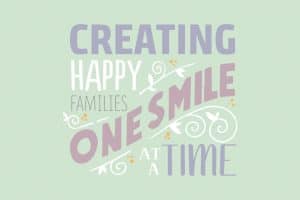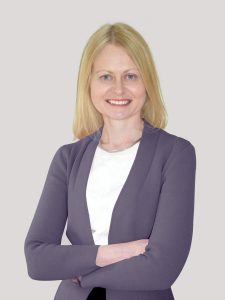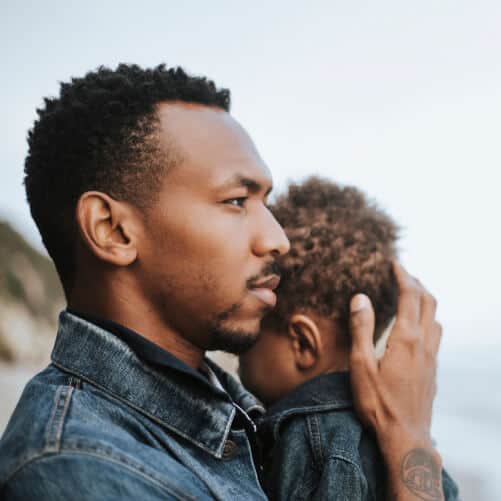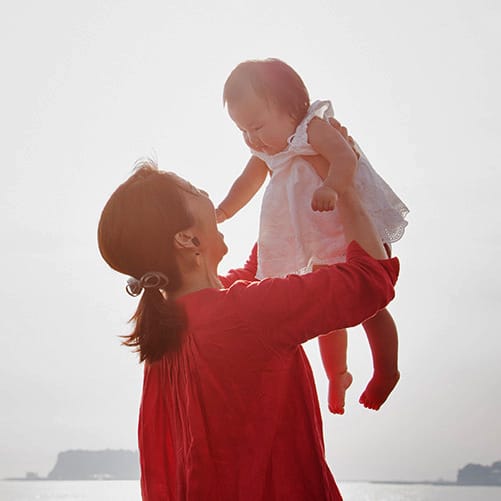28 July 2024
Netflix’s documentary series “The Man with 1,000 Kids” was released in the UK in July 2024. It takes an in-depth look at the actions of a prolific Dutch sperm donor, called Jonathan, who allegedly may have fathered over 1,000 children. Episode one starts with personal accounts from women and couples who conceived their children privately with Jonathan’ sperm and their shock, anger and concern when they began to learn about the alleged scale of his sperm donation activity. It opens with the question “What kind of man would do that?”.
It starts with various soundbites and raises a series of serious issues and questions. One women says “I got to know him on the internet. When you look at his video he has beautiful blonde hair and a big smile” and I thought “I am ready to have beautiful babies”. Another women alleges he was “willing to help five families” but “there were already hundreds”. It refers to legal action against him for allegedly fathering at least 550 children. Another women asks “why are you putting so many children on this earth? Why? Another voice says “I know he travelled to a lot of countries in the world. And the question is, how big is this? How many kids are there?” A further voice asks “what happens psychologically to these children?”.
Motivations for Private Sperm Donation
Episode one introduces Suzanne and Natalie, a Dutch same-sex couple. Natalie discusses how she always wanted to be a mother. She wanted to experience pregnancy in the same way as her mother and grandmother did. Age 28, she felt ready to become a mother. She speaks compellingly about how everywhere she looked she saw babies and pregnant women. She explains how if you want to have a baby you can see people everywhere with babies. Natalie goes on to explain her motivations for conceiving with a private sperm donor. “When you’re a lesbian, it’s not like you’re gonna have sex someday and then you’re gonna get pregnant. And I’m not gonna have sex with a guy. There are sperm banks you can go to, but you can’t meet the sperm donor in person. I want to look the sperm donor in the eye and see if this personality also fits with my personality because a sperm donor is making up fifty percent of your child. There are websites online with donors who are willing to provide in private, not to go through sperm banks…”. This desire to meet the sperm donor and find out more about his character and personality in person was appealing and a strong motivating factor.
It then introduces married heterosexual couple Joyce and John. John goes on to explain why he and Joyce turned to sperm donation. “I had three kids from a previous marriage and I had a vasectomy after the third child. And then of course, I married a wife that is younger than I am. And then we went back to the doctor to see if I could have my vasectomy undone and that turned out to be impossible”. Medical reasons like this can be another reason for turning to sperm donation.
Natalie goes on to say how she turned to a website called “Longing for a Child” where she found details of private sperm donors, with short descriptions and contact email addresses. Natalie explained how compelling she found this process. “It’s like when you go to an ice cream seller and you want to buy an ice cream and you see all the different types of flavours you can choose from…and you can email the person directly and I found it perfect”. Joyce goes on to explain how when she contacted some prospective private sperm donors online they were “weird” and some of them only wanted to do natural conception through sex.
Later on Jonathan explains why he decided to become a sperm donor. “I befriended a guy in college and he told me that he was infertile. It made a huge impact on me. And I was just imagining, well, what would it be if I became a donor? They really help building these families, to make a dream come true”. Natalie goes on to explain how he wanted to help “but he didn’t like the sperm banks at all because the sperm banks were making money out of it and didn’t want to make money out of it. He wanted to be more philanthropic”.
Compelling accounts then follow about their positive impressions upon meeting Jonathan in person. Single woman Vanessa recounts “Okay, that’s a good looking guy. Jeez. Well, yeah, he could be the father of my child”. Vanessa goes on to explain how he “seems very reliable and he can really draw you in”. Natalie says “he looked exactly like he did in the pictures. I thought he was an attractive guy. He had curly hair. He had bright blue eyes. Good set of teeth. He looked good”. Natalie goes on to say that he described himself as a teacher and how they formed a connection over this because she comes from a family of teachers. Joyce and John add “We noticed his hair. Immediately. We really hoped that our kids have his hair. Because he has a beautiful head of curls”. There is also footage from one of Jonathan’s YouTube vlogs saying “over the dinner or lunch you talk everything through to see if there’s also this connection”.
Vanessa proceeds to explain that in the Netherlands following sperm donation at a fertility clinic, you have to wait 16 years to find out who the donor is and establish contact with him. Vanessa adds “and I really want to have contact from the beginning”. Video footage from one of Jonathan’s YouTube vlogs follows with him saying “I see the children a few times in the year. That’s, I think, for all, most optimal. But I’m totally fine. I totally accept that parents choose to do something else, choose what they prefer. It’s about them. It’s not about me”. Single woman Nicolette adds “he was very willing to be in our lives, to have contact. Yeah, I thought I’d found the perfect match”.
There is, however, no focus in this episode on medical screening to ensure the privately donated sperm is free from infectious diseases or inherited genetic disorders (unlike at a fertility clinic where sperm donors have to provide a detailed medical and family history, undergo rigorous medical screening and where their sperm is tested for a range of infectious diseases and genetic conditions to help protect the health and wellbeing of the recipient woman and any future born child).
Conception By Privately Arranged Sperm Donation
Episode one then explains their discussions with Jonathan and attempts at private conception with his donated sperm. Nicolette reports that he told her that he had helped two families and she was the third at the time. Natalie explains that she too asked him how many families he was willing to help. Accounts then follow about the women driving to Jonathan’s house to collect his sperm sample whilst they are ovulating, with the intention of bringing it back to their home for self-insemination. It describes their attempts to keep his sperm sample warm on the journey back to try and maintain its viability. Joyce goes on to explain how she got lost on the drive home and ended up self-inseminating in her car. Natalie describes “you’re going upstairs and then you get the syringe. fill it up. You put your legs up, you squeeze it and then it can go through the process of getting through to the egg”. She goes on to explain that the first couple of attempts were unsuccessful and so they asked Jonathan to their home to donate. Further footage from Jonathan’s vlog explains “I travel most of the times to the recipients to donate at their place, in their bathroom”. Vanessa goes on to report how Jonathan gave her the opportunity to conceive naturally through sex and how having talked it through that “he wouldn’t tell anyone else” and that it “was just between us” she decided to proceed with natural conception.
Isala Fertility Center and Regulated Sperm Donor Practices
Episode one then introduces a clinical embryologist at Isala Fertility Center in the Netherlands that helps women and couples conceive with donor sperm from their sperm bank. The embryologist explains that a sperm donor signs a written agreement that he will not donate at other fertility clinics or to other women and will only donate at their clinic. He adds that guidelines state that a sperm donor is not allowed to have more than 25 children in the Netherlands. He then proceeds to explain that he received an anonymous email saying there was an active sperm donor on the internet who had fathered more than 150 children in the Netherlands, mostly through self-insemination at the women’s homes, but who had also donated many times at Dutch fertility clinics.
The clinical embryologist goes on to say how shocked he was about this and that the reason that there are guidelines to prevent sperm donors having more than 25 children in the Netherlands is to reduce the risk of consanguinity, explaining “that’s half-siblings who are not aware that they are half-siblings and are attracted to each other and will have children together”. This episode does not, however, spell out that children born as a result of consanguinity are at higher risk of cognitive difficulties, hearing problems and genetically inherited diseases.
Discovery of Prolific Sperm Donation
Episode one then provides accounts from Nicolette about how she learned that her sperm donor, Jonathan, had allegedly donated to multiple other women. The first concerned a female colleague at the preschool where she worked. A few years later, Nicolette began to learn about other women who had donor conceived children with Jonathan’s sperm. She explains that she discovered another colleague with a daughter who looked like her own daughter. She recounts “the children are blonde, and you see the eyebrows are the same and the nose and the ears as well. That’s the point we found out we’d both used Jonathan as well”. She goes on to explain that there’s “also a classmate of my niece who called me a few years later telling me she had a son” and “a friend of my first boyfriend who’s telling me she had a son”. She goes on to mention someone else from the town where she was born who has a child as well and how she started thinking “if there are so many connections in my direct environment how many are there?”.
Accounts then follow from couples Natalie and Suzanne and Joyce and John about how they proceeded to have a second child with Jonathan’s donated sperm to expand their families. Natalie explains that she asked Jonathan how many children he had fathered by then and how Jonathan reportedly replied that the number was 25. They thought this was a lot, but were reassured when Jonathan reportedly explained to them “okay, but it’s the length of the time and there are a couple of women who have seconds or thirds”. Natalie and Suzanne explain that in proceeding they found Jonathan difficult to get hold off and this coincided with him posting videos of his trips all around the world.
Episode one then shows the clinical embryologist explaining that 11 sperm banks in the Netherlands got in touch with each other and discovered there was a donor who had donated at 11 fertility clinics, resulting in 102 children born from his sperm. This led to a decision to contact and inform every patient who had been treated with his donor sperm and how “patients were shocked, were angry, were sad, were crying” and how he was then notified that a newspaper was going to publish a story about this.
Nicolette recounts that it was in 2017 that she first came across a news item on the radio about a sperm donor who had donated at 11 Dutch fertility clinic, resulting in 102 donor conceived children. She was then rapidly contacted by a colleague who alleged the donor was Jonathan. She goes on to say that following the realisation that there could already be 102 children from clinic treatment she found herself questioning “how many private donations did he do? And how many more children are there?”. Natalie and Suzanne describe their shock and Vanessa explains how it hit her “like a ton of bricks”. Nicolette then explains how she decided to find other mothers in the same situation to try and stop him and found a Facebook group with more parents. Natalie describes how the group just kept growing with more and more mothers.
Implications of Prolific Sperm Donation
Episode one ends with accounts from the Dutch families about their concerns and the implications of Jonathan’s alleged prolific sperm donations. Joyce poignantly says “you try, as a mum, you try to protect children from everything. And this was something I could not protect them [from]”. John goes on to describe the panic, concern and danger they felt about the situation. “There was also the story about the three children in Almere that were in the same area and even in the same school. They were in the same day camp. And then we thought ‘ Oh [xx]. What if these children meet each other and maybe have a connection or fall in love and they don’t know they’re related?”. Joyce goes on to describe her worries that “maybe there’s another child in your street, you know? Every blonde kid, I was like is that a Jonathan kid? I was obsessed with it”.
It then ends with Nicolette’s realisation that Jonathan’s vlogs came from different countries all around the world, causing her to question whether he donated in each of those countries as well. She goes on to say “it’s terrifying to see him pop up in all of these countries on his YouTube channel” and the episode concludes with a short introduction to couple Kate and Laura from Australia who explain that they also have two sons.
Specialist Family Building, Fertility and Donor Conception Law
Specialist fertility and family law strategies help inform effective approaches to (in)fertility and family creation. They identify and manage a range of legal and practical issues associated with sperm donation and assisted conception and help maximise successful results. In doing so, they address:
- Complex personal and family situations.
- Legal and practical aspects of fertility preservation and maximisation.
- Legal and practical aspects of assisted conception with a known sperm/egg donor, anonymous/identity-release donor or co-parent (e.g. legal parentage, parental rights, financial responsibility, risks in practice and dispute mitigation).
- Family building options and issues arising from impaired fertility/infertility, cancer diagnosis/illness, unsuccessful conception attempts, gender transition, change in personal circumstances, age and later-life parenthood.
- Posthumous conception with the eggs, sperm and embryos of a deceased loved one (e.g. due to illness or accident).
- Legal and wider aspects of international surrogacy or a UK surrogacy arrangement.
- Legal parentage issues and disputes (e.g. concerning DNA testing, direct-to-consumer genetic testing, rectification of birth certificate, declaration of parentage, step-parent adoption, recognition of overseas adoption, parental order).
- Care and upbringing of children following a dispute with an ex-partner, parent, donor or surrogate (e.g. contact, residence, financial arrangements, parental responsibility, specific issue or prohibited steps).
- Issues with importing frozen gametes and embryos into the UK for fertility treatment and surrogacy (e.g. due to anonymous and commercially obtained gametes and embryos which engage UK public policy restrictions).
- Issues exporting frozen gametes and embryos abroad for fertility treatment and surrogacy (e.g. consent and storage term difficulties).
- Expert witness fertility, surrogacy and donor conception law services.
If you need to put in place effective legal and practical strategies or require advisory and consultancy to navigate fertility and pre-conception, assisted reproductive technologies, fertility treatment, donor conception, global family building and effective parenting contact Louisa Ghevaert by email louisa@louisaghevaertassociates.co.uk or telephone +44 (0)20 7965 8399.
Images: Louisa Ghevaert, CEO & Founder Louisa Ghevaert Associates






